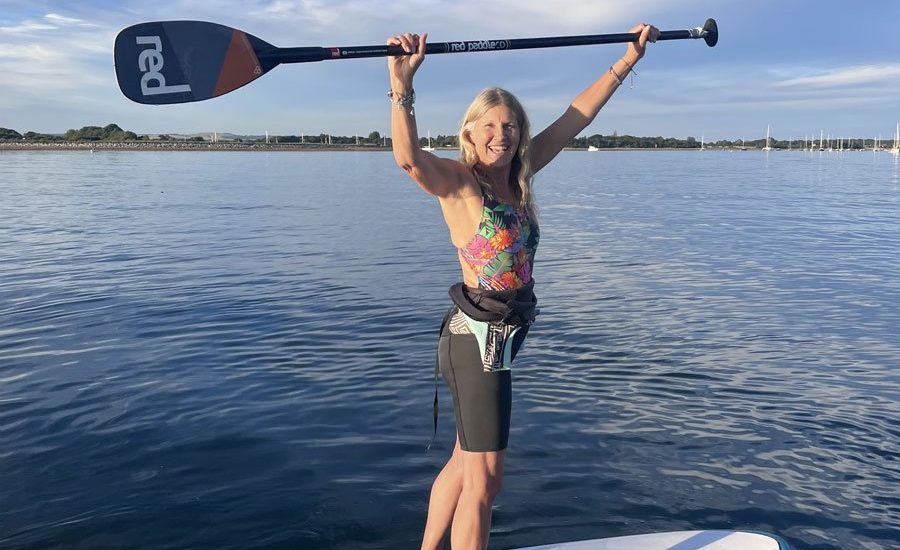When I began stand up paddle boarding, here’s what I wish I knew: the importance of proper paddle technique, the value of checking weather conditions beforehand, and the necessity of investing in a good quality board. Mastering these fundamentals can make your experience on the water not only smoother but also more enjoyable. So, if you’re just starting out and eager to avoid the common pitfalls, keep these key pointers in mind. Let’s dive into the essential lessons on things I wish I knew when I started stand up paddle board.
Things I Wish I Knew When I Started Stand Up Paddle Board
Welcome to the exciting world of stand up paddle boarding! If you’re just starting out on this fun water activity, there are some valuable tips and tricks that can make your experience even more enjoyable. In this comprehensive guide, we’ll explore everything I wish I knew when I first started paddle boarding. From choosing the right board to mastering your technique, let’s dive in!
Choosing the Right Paddle Board
One of the first things to consider when starting stand up paddle boarding is choosing the right board. There are various types of paddle boards available, each designed for different purposes. For beginners, a stable and wide board is recommended to help with balance. Look for boards that are at least 10 feet long and 30 inches wide for better stability on the water.
When selecting a paddle board, also consider the weight capacity. Make sure the board can support your weight along with any additional gear you may bring along. Inflatable paddle boards are a popular choice for beginners due to their portability and ease of storage, while hard boards offer better performance in terms of speed and maneuverability.
Understanding Paddle Techniques
Once you have your board selected, it’s important to master the basic paddle techniques. Stand up paddle boarding involves using a paddle to propel yourself through the water, so having the right technique can make a significant difference in your experience. Here are some key paddle techniques to keep in mind:
Proper Paddle Grip
Hold the paddle with one hand on the top and the other on the shaft, keeping your arms shoulder-width apart. Make sure the blade is facing away from you to maximize efficiency.
Forward Stroke
To move forward, place the paddle blade in the water near the front of the board and pull it back towards your ankle, then repeat on the other side. Keep your body upright and engage your core for stability.
Turning Techniques
To turn your board, use sweeping strokes with the paddle on one side of the board. For a sharper turn, place the paddle further away from your board’s tail. Experiment with different paddle angles to find the most effective turning technique for you.
Learning Proper Balance and Posture
Balance is key to mastering stand up paddle boarding. When you first start out, it’s normal to feel a bit wobbly on the board. Here are some tips to help you improve your balance and maintain proper posture while paddling:
Feet Placement
Stand with your feet shoulder-width apart and parallel to the stringer (center line) of the board. Distribute your weight evenly between both feet to maintain stability.
Engage Your Core
Keep your core muscles engaged to stabilize your body and improve balance. A strong core will also help prevent fatigue and reduce the risk of injury while paddling.
Look Ahead
Focus on a fixed point on the horizon rather than looking down at your feet. This will help you maintain balance and paddle in a straight line.
Understanding Water Safety
While stand up paddle boarding is a fun activity, it’s important to prioritize water safety. Here are some essential tips to keep in mind when heading out on the water:
Wear a Life Jacket
Always wear a properly fitting life jacket, especially if you’re not a strong swimmer or are paddling in unfamiliar waters. A life jacket can save your life in case of an emergency.
Check the Weather Conditions
Before heading out, check the weather forecast and wind conditions. Avoid paddling in strong winds or rough waters, especially if you’re a beginner. Calm conditions are ideal for learning and improving your skills.
Stay Hydrated and Sun Protected
Bring plenty of water and apply sunscreen to protect your skin from sunburn. Paddling under the sun can be dehydrating, so make sure to drink water regularly and wear a hat or sunglasses for added sun protection.
Exploring Different Water Environments
Stand up paddle boarding allows you to explore various water environments, from calm lakes to ocean waves. Each environment offers a unique experience and challenges. Here’s what you should know about paddling in different water environments:
Lakes and Rivers
Calmer waters like lakes and rivers are ideal for beginners to practice their paddling skills. These environments offer a peaceful setting with minimal currents, making it easier to focus on technique and balance.
Ocean and Surf
Paddling in the ocean or surf requires more advanced skills due to waves and currents. If you’re new to paddle boarding, it’s best to start in calmer ocean conditions before venturing into more challenging surf. Always be cautious of rip currents and tides.
Flatwater vs. Whitewater
Flatwater paddling on serene lakes or ponds is great for leisurely paddling and relaxation. On the other hand, whitewater paddling involves navigating fast-moving rivers with obstacles like rocks and rapids. Whitewater paddling is more suitable for experienced paddlers due to its technical challenges.
Building Endurance and Strength
Paddle boarding is not just a fun activity; it’s also a great workout that can help improve your endurance and strength. Here are some tips to maximize the fitness benefits of stand up paddle boarding:
Vary Your Paddling Intensity
Switch between paddling at a moderate pace and sprinting to challenge different muscle groups and improve cardiovascular fitness. Varying your paddling intensity also prevents muscle fatigue and keeps your workout exciting.
Try Yoga on Your Board
Yoga poses on a paddle board, also known as SUP yoga, can help improve balance, flexibility, and core strength. Practicing yoga on the water adds an extra challenge and brings a sense of tranquility to your paddle boarding experience.
Stay Consistent with Your Paddling Routine
Set specific goals for your paddle boarding workouts and track your progress over time. Consistency is key to building endurance and strength, so aim to paddle regularly and challenge yourself with new techniques and routes.
Connecting with the Paddle Boarding Community
Stand up paddle boarding is not just an individual sport; it’s also a great way to connect with like-minded individuals and join a supportive community. Here’s how you can get involved in the paddle boarding community:
Join Paddle Boarding Groups
Look for local paddle boarding groups or clubs in your area where you can meet fellow paddlers, participate in group paddles, and share tips and experiences. Paddle boarding groups often organize social events and paddle board races for members to enjoy.
Attend Paddle Boarding Events
Check out paddle boarding events and competitions happening in your region. Attending these events not only allows you to witness top paddlers in action but also provides an opportunity to learn new skills and connect with others who share your passion for paddle boarding.
Share Your Paddle Boarding Adventures
Share your paddle boarding adventures on social media platforms like Instagram and Facebook using hashtags such as #SUPlife or #paddleboarding. By sharing your experiences, you can inspire others to try stand up paddle boarding and connect with a wider community of paddlers.
Stand up paddle boarding is a rewarding and enjoyable activity that offers a unique way to explore the water and stay active. By keeping these essential tips in mind, you can enhance your paddle boarding experience, improve your skills, and connect with a vibrant community of paddlers. Remember to prioritize safety, practice proper technique, and have fun out on the water. Happy paddling!
5 things I wish I knew as a BEGINNER Paddle Boarder.
Frequently Asked Questions
What safety precautions should I take before starting stand up paddle boarding?
Before starting stand up paddle boarding, it’s essential to wear a personal flotation device (PFD) and leash, familiarize yourself with the weather conditions, know how to swim, and always inform someone of your paddle boarding plans.
How can I improve my balance on a stand up paddle board?
To improve your balance on a stand up paddle board, practice maintaining a firm stance, engage your core muscles, keep your feet parallel and shoulder-width apart, and try different stances to find what works best for you.
What are some common mistakes to avoid when beginning stand up paddle boarding?
Common mistakes to avoid when starting stand up paddle boarding include standing too far forward or back on the board, gripping the paddle too tightly, forgetting to adjust the paddle length, and not looking ahead to anticipate changes in water conditions.
Final Thoughts
When I started stand up paddle boarding, I wish I knew how crucial it is to choose the right board size for stability and comfort. Additionally, understanding proper paddling techniques early on would have saved me from exhaustion and potential injuries. Lastly, investing in quality safety gear and accessories is essential for an enjoyable experience. In summary, remembering these key points from the start can make a significant difference in your stand up paddle board journey.






